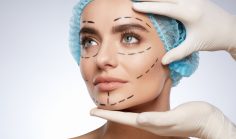Retinal detachment occurs when the retina, a layer of the eye that is responsible for light sensitivity and optic nerve transmission, tears away from the back of the eye. Interestingly, the retina is technically part of the brain. When the retina detaches from the back of the eye, retinal cells are deprived of their blood supply, oxygen, and essential nutrients, causing potentially irreversible damage to the retina. Because vision loss is a possibility, retinal detachment is an emergency and should be treated as soon as possible. The process of detachment is typically painless, though patients may see flashes or floaters, dark spots, or shapes that intermittently appear in the line of vision.
Retinal Detachment

What Is Retinal Detachment
What Causes Retinal Detachment
The middle of the eye contains a gel layer called the vitreous. The vitreous is connected to the retina, a layer of the eye that is crucial in nerve transmission . As we age, the vitreous sometimes shrinks and pulls on the retina, resulting in tears in. Tears in the retina allow for the vitreous fluid to leak through the retina and settle in between the retina and the back of the eye, creating pressure that pulls the retina away from the back of the eye.
Retinal detachment can be caused by:
- Aging
- Eye injury
- Diabetes, advanced
- Eye inflammation
Risk Factors For Retinal Detachment
There are several factors that can raise your risk of retinal detachment. These include:
- Being over 50.Aging can cause the vitreous or the retina to shrink, increasing the risk of detachment
- Suffering an eye injury
- Poorly controlled diabetes. The changes that occur to the retinal blood vessels during diabetic retinopathy can increase the risk of retinal detachment.
- Eye inflammation, such as conjunctivitis (pink eye)
Diagnosing Retinal Detachment
Several diagnostic tests are available to help doctors make a retinal detachment diagnosis:
Dilated eye exam. During this exam, the doctors use drops to dilate, or widen, the pupil. With the help of a light and a special microscope, doctors are then able to see part of the retina and other areas of the inner eye through the dilated pupil.
Ultrasound Imaging. Ultrasounds produce an image of the eye that can reveal retinal damage and fluid leakage.
Symptoms of Retinal Detachment
Symptoms of retinal detachment include:
- The sudden appearance of floaters and flashes
- A shadow in your peripheral (side) vision
- A gray curtain making its way across your field of vision
- A sudden decrease in your vision.
Prognosis
According to Medline Plus, a service of the National Library of Medicine, the prognosis of a retinal detachment depends on the location and extent of the detachment. If the macula was undamaged, treatment can give excellent results and vision can be restored. However, successful repair of the retina does not always fully restore vision and some detachments can’t be repaired. Early treatment is essential.
Living With Retinal Detachment
In many cases, depending on the eye disease or condition you have and your response to treatment, your vision may not be not noticeably impaired and you won’t experience any pain or only mild discomfort.
However, you may need to compensate for partial loss of vision. Ask your eye care specialist about low-vision rehabilitation devices and services that will help you learn coping strategies so that you can to continue to live independently.
Many people with some vision loss have to stop driving. If that happens to you, visit SeniorDrivingAAA.com to get information about affordable and convenient ways to maintain your mobility.
Here are some top tips for living well with vision impairment:
- To wake up, a person may use a talking watch or talking alarm clock.
- To get dressed someone may have their own system of identifying clothes and colors. They might use safety pins to match the same color outfits together, or use Braille clothing tags.
- Instruction is available for visually impaired people to learn independent meal preparation skills. Special dots or Braille can be put on conventional and microwave ovens to aid in instruction and use.
- Someone with low vision might use a dark tablecloth with light colored dishes and a light tablecloth for dark dishes. Contrasting colors help individuals who have some remaining vision better see where things are.
- Similarly, someone with low vision might use dark mugs or glasses to pour light colored liquid such as milk and light colored mugs or cups to pour coffee or other dark liquids such as tea or hot chocolate.
- To locate keys, wallet or purse, they might make an effort to put them in the same place all the time so they can be found more easily.
- For leisure activities a person can watch audio described movies, listen to recorded books called Talking Books, play cards or other adapted games with friends.
Screening
Serious eye diseases and conditions often have no symptoms until irreversible damage to vision has been done. If you wear prescription glasses and/or contacts, you probably go to an optometrist for an annual check-up to make sure your prescription hasn’t changed and to order a new batch of contacts if you’re running out of them. Optometrists conduct vision tests to check for basic vision impairment, and can prescribe glasses and contact lenses. They can also spot early warning signs and give you a referral to an ophthalmologist, an eye doctor with a medical doctor degree, for a more thorough examination. If you do not wear contact lenses or glasses, chances are you miss out this periodic optometric screening. Many times, family doctors with conduct a visual acuity test, which is a series of letters decreasing in size on a chart that patients are asked to read to the best of their ability. This gives doctors the opportunity to do as the optometrists would.
The standard recommendation for all adults over the age of 40 is to have an eye exam at least every two years, and for adults over 65, to have an eye exam every year. According to the National Federation of the Blind, prompt detection and treatment can preserve your vision for a lifetime even if you do contract a serious eye condition or disorder. Schedule an eye exam with an optometrist. If he or she spots any problems that may be of concern, you will most likely be referred to an ophthalmologist, a medical doctor specializing in eyes, for further testing. Be sure to make an appointment with the ophthalmologist and follow recommendations regarding the frequency of follow-ups should any diseases or conditions be detected.
People with diabetes or at risk of developing gestational diabetes are recommended to get additional ophthalmic screening.
The American Academy of Ophthalmology recommends the eye screening schedule:
Type 1 Diabetes: Within five years of being diagnosed and yearly thereafter.
Type 2 Diabetes: At the time of diagnosis and yearly thereafter.
During pregnancy: During the first trimester and follow-ups if indicated.
Prevention
Medline Plus, a service of the National Library of Medicine, reminds us our best defense is to have regular checkups because eye diseases do not always have symptoms. Early detection and treatment are the keys to preventing vision loss.
Beyond that, a healthy diet that has sufficient vitamin and other nutrients will help keep your eyes lubricated and free of infections.
Also, avoid second hand smoke and if you smoke, kick the habit.
Protect your eyes from injury by wearing plastic eye guards if you’re involved in any activity that poses a risk of flying objects or particles.
Finally, remember that overexposure to the sun is just as bad for your eyes as it is for your skin. Wear sunglasses and stay away from tanning beds
Medication And Treatment
If the retina becomes fully detached, surgery is necessary for reattachment. As permanent vision loss is possible, the surgery is considered an emergency and should be done immediately.
Surgical options for retinal detachment include:
- Lasers. The lasers are used to burn tissue and “weld” the retina to the back of the eye, which is where the retina normally adheres.
- Scleral buckle. A flexible band around the eye counteracts the force pulling the retina out of place and allows the retinal cells to more readily attach to their native location in the back, or posterior, portion of the eye.
- Pneumatic retinopexy. Atemporary gas bubble is injected into the vitreous humor (a clear gel which comprises the middle portion of the eye between the lens and the retina) , in combination with laser surgery or cryotherapy. The gas bubble pushes the retinal tear back into place and eventually disappears. However, patients are required to maintain a prone (face-down) position for an extended period of time to encourage the gas bubble to make contact with the retina and the back of the eye.
- Vitrectomy. The vitreous humor is removed and replaced with a gas bubble or an oil bubble to more effectively “push” the retina against the posterior aspect of the eye
- Cryotherapy. As a treatment for retinal breaks, a freezing probe is applied to the surface of the eye. This prompts the growth of beneficial scar tissue that promotes reattachment of the edges of the breaks.
Complementary and Alternative Treatment
No alternative treatments have been proven to be effective for retinal detachment.
When To Contact A Doctor
In addition to your regularly scheduled visits to your eye care professionals, get immediate medical attention if you notice any sudden change in your vision or experience unusual symptoms such as extreme eye pain, burning, itching, redness, sudden vision loss, or fluid coming out of your eye.
Questions For A Doctor
Before you visit your doctor, write down a list of questions and concerns. Consider bringing a friend or family member along who can help you make sure you get all the information you need. In addition, writing down the doctor’s answers and recommendation for later reference is a good idea. Also come prepared with your medical history, information about any allergies you have, your family medical history, and a complete list of all medications you take including over-the-counter herbs and supplements.
Questions you may wish to ask your doctor include:
- How much will surgery and treatment cost?
- Will the treatments control my problems so that I retain my vision?
- How often will I need to come back to you for check-ups?
- Should my adult children be checked if my condition is hereditary?
- Are there any lifestyle changes I can make that will help prevent other eye diseases or the progression of the ones I already have?












